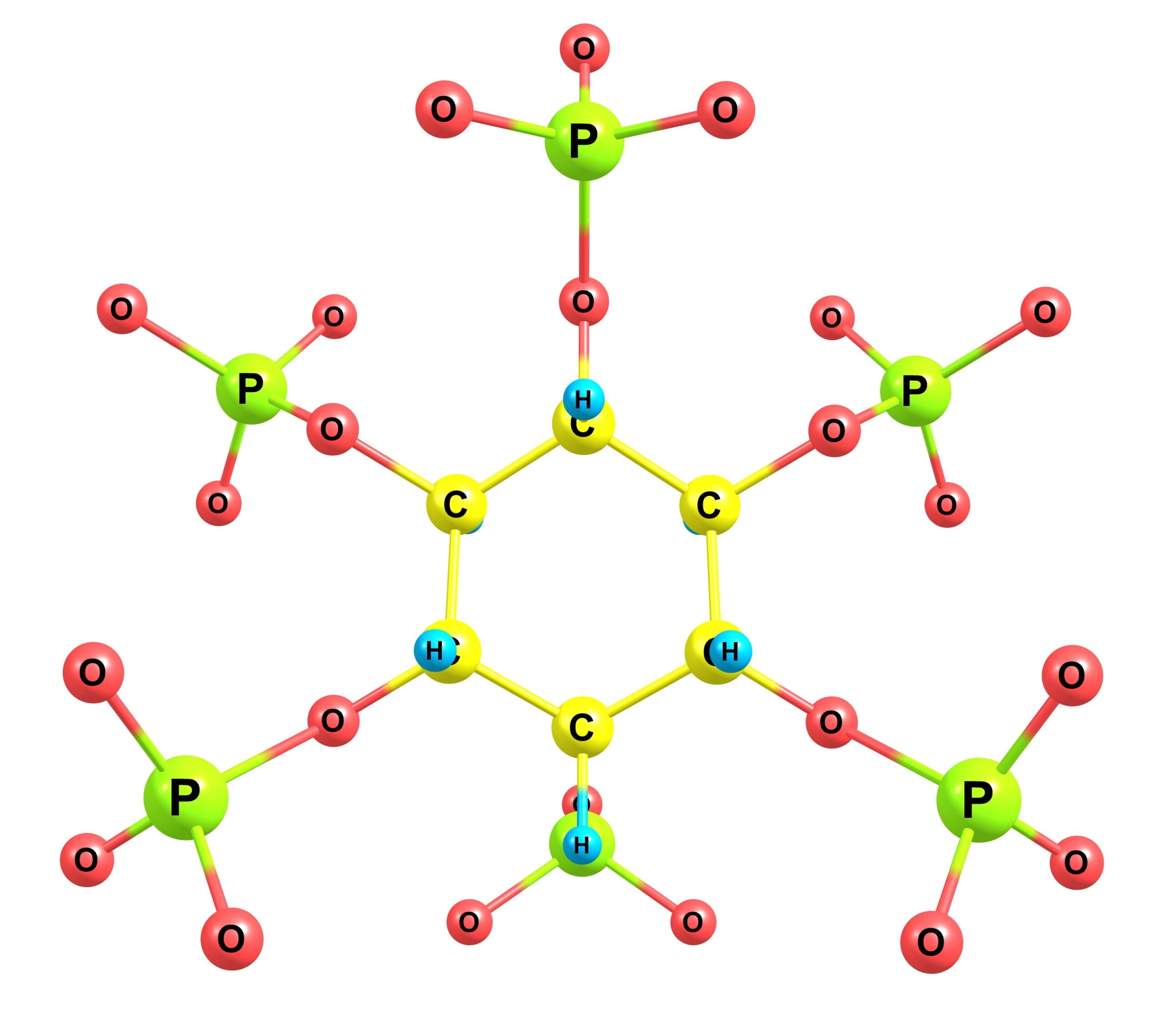
Phytic acid from plants, which contains 28% phosphors w/w, is increasingly tested as the basis for bio-based PIN FRs. The rieview summarises nearly one hundred studies of phytic acid and compounds based on phytic acid as PIN FRs in a range of polymers and applications (including EVA, PLA, PA, PU, PP, PVC, PE, epoxy). Phytic acid itself (C6H18P6) has limitations as a flame retardant because it is hydrophilic and because high loadings are required. However, its six double hydroxyl (-OH) groups can be readily combined with metals giving phytate salts in which the metal ion provides flame retardnt or smoke suppression synergies, including salts of Al, Cu, Fe, La, Mg, Na, Ni, W. The metal salts can improve gas phase flame quenching and contribute to compact, glossy char formation. Phytic acid can also be compbined with inorganic FRs, e.g. by coating metal hydroxides onto phytate salts. Phytic acid can also be combined with nitrogen FRs, again by the hydroxyl groups, e.g. urea, melamine, diamines. Phytic acid – melamine nanosheets have shown to be effective in reducing heat release and smoke emission in PU, epoxy and PP. The nanosheets can also be doped with synergistic metal ions (e.g. Mn). Phytic acid and melamine can also be combined onto nanofillers, such as carbon nanotubes. The authors identify as areas for future research: further combinations of phytic acid with other mateirals to avoid hydrophilicity limitations; delivery as polyelectrolyte; combination with bio-sourced carbon materials (such as lignin); application in 3D-printing (no studies identified to date).
“Flame retardancy efficacy of phytic acid: An overview”, T. Mokhena et al., J. Applied Science 2002, e52495 https://doi.org/10.1002/app.52495